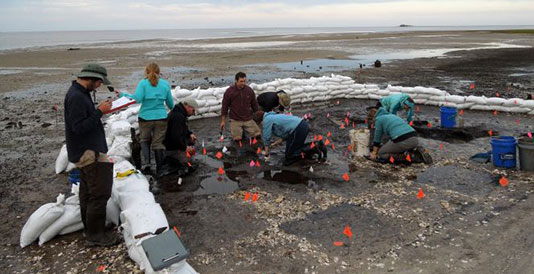 November 28, 2015 - A Tampa Bay Times article by Craig Pittman highlights research conducted by University of Florida archaeologist Ken Sassaman on how Florida's early inhabitants adapted to sea level changes:
November 28, 2015 - A Tampa Bay Times article by Craig Pittman highlights research conducted by University of Florida archaeologist Ken Sassaman on how Florida's early inhabitants adapted to sea level changes: "The 2012 emergency call sent archaeologists scrambling. Rising seas were washing away an ancient Indian burial ground near Cedar Key. They had to dig up the remaining graves and collect the bones before the whole thing disappeared into the Gulf of Mexico. But while digging, University of Florida archaeologist Ken Sassaman discovered something that surprised him. The burial ground of some 1,300 graves was actually a re-burial ground. The skeletons had been buried somewhere else, then moved to this spot. Florida's early inhabitants had done that, Sassaman said, because they were dealing with the same problem that's facing the low-lying Sunshine State now: waves that creep higher and higher, crumbling the coastline and forcing the inhabitants to make tough choices about the future. Their solution was to move everything important to them, including their ancestors, he explained."
Continue Reading Tampa Bay Times Article
Photo credit: Ken Sassaman











